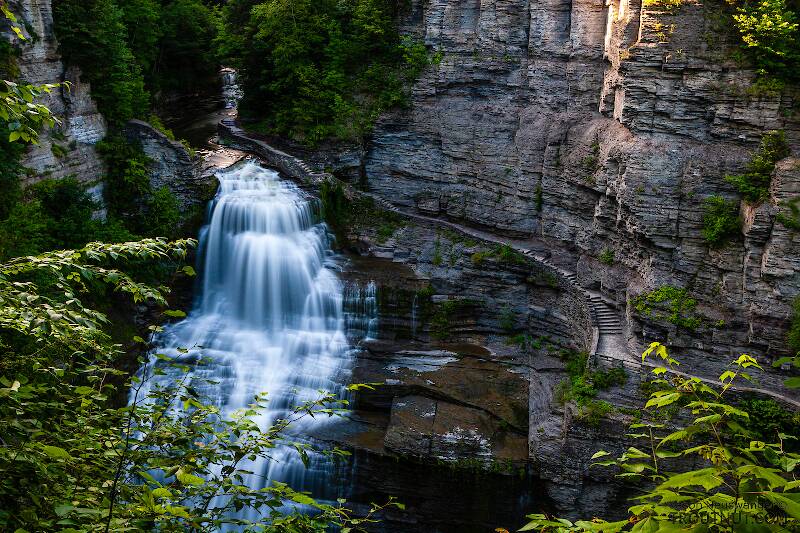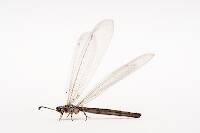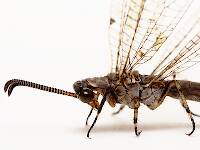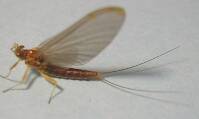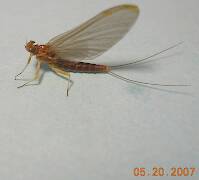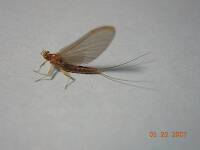
Hex Mayflies
Hexagenia limbata
The famous nocturnal Hex hatch of the Midwest (and a few other lucky locations) stirs to the surface mythically large brown trout that only touch streamers for the rest of the year.
Featured on the forum

This is an interesting one. Following the keys in Merritt R.W., Cummins, K.W., and Berg, M.B. (2019) and Jacobus et al. (2014), it keys clearly to Ephemerella. Jacobus et al provide a key to species, but some of the characteristics are tricky to interpret without illustrations. If I didn't make any mistakes, this one keys to Ephemerella mucronata, which has not previously been reported any closer to here than Montana and Alberta. The main character seems to fit well: "Abdominal terga with prominent, paired, subparallel, spiculate ridges." Several illustrations or descriptions of this holarctic species from the US and Europe seem to match, including the body length, tarsal claws and denticles, labial palp, and gill shapes. These sources include including Richard Allen's original description of this species in North America under the now-defunct name E. moffatae in Allen RK (1977) and the figures in this description of the species in Italy.

Troutnut is a project started in 2003 by salmonid ecologist Jason "Troutnut" Neuswanger to help anglers and
fly tyers unabashedly embrace the entomological side of the sport. Learn more about Troutnut or
support the project for an enhanced experience here.
Wolve
Posts: 1
Posts: 1
Wolve on Jan 10, 2008January 10th, 2008, 12:32 am EST
I am trying to tie a female adult early black stone. I want a fly that will look like it is laying eggs at or in the surface of the water. The pattern I am working on calls for wood duck underwing with dark grey duck overwing flaired. I am not sure how to flair the duck wings on this fly. I tied one with standard duck quill wings on the side but somehow it doesn't look right. I think the pattern means strands of a duck feather but I am not sure. Can anyone help me out?
Dano on Jan 10, 2008January 10th, 2008, 1:56 am EST
Perhaps if you could name the exact nomenclature of the fly pattern, more concise advice could be given...
In general, though, most reciepes will specify quill barbs vs. quill segments. In tying a flared (delta) wing each wing is tied on seperately at the desired angle, then one or two half figure 8 wraps to make final adjustments.
Dano
In general, though, most reciepes will specify quill barbs vs. quill segments. In tying a flared (delta) wing each wing is tied on seperately at the desired angle, then one or two half figure 8 wraps to make final adjustments.
Dano
Quick Reply
Related Discussions
Topic
Replies
Last Reply
6
Nov 4, 2011
by Dinerobyn
by Dinerobyn
3
Jul 28, 2013
by Martinlf
by Martinlf

